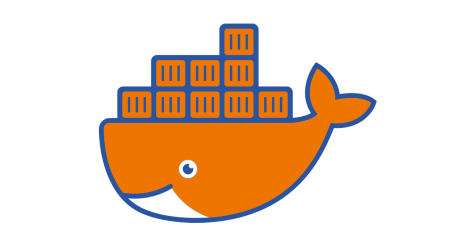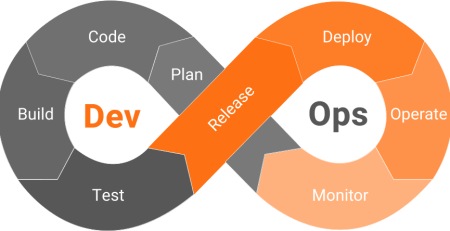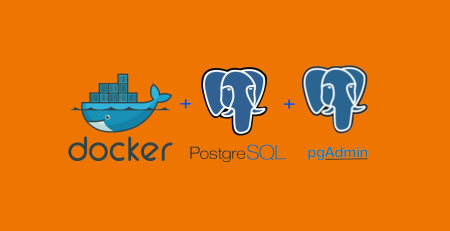Mastering Kubernetes: The Power of Simplicity in Complex Components
Table of Contents
Introduction:
Kubernetes is a strong and adaptable technology in the rapidly changing field of container orchestration. The complex structure of its components is one important feature that frequently stumps newcomers. But as we set out to learn Kubernetes, we’ll come to the important insight that deciphering the intricate relationships between its parts requires keeping things simple.
Section 1: Understanding Kubernetes Components
The open-source container orchestration platform Kubernetes, often known as K8s, automates the deployment, scaling, and administration of containerized applications. Fundamentally, Kubernetes is made up of a few key parts that combine to provide a strong and adaptable ecosystem.
1.1 Pods: The Foundation of Kubernetes
A Pod is the basic unit of deployment in Kubernetes, representing the smallest and simplest unit in the Kubernetes object model. A Pod encapsulates one or more containers, storage resources, and a unique network IP, enabling seamless communication between containers within the same Pod.
apiVersion: v1
kind: Pod
metadata:
name: example-pod
spec:
containers:
- name: nginx-container
image: nginx:latestThis basic example introduces a Pod named “example-pod” running an Nginx container. Pods are ephemeral, and their lifecycle is managed by controllers, such as Deployments or StatefulSets.
1.2 Deployments: Managing Pod Lifecycle
A Deployment is a higher-level abstraction that enables declarative updates to applications. It manages the deployment and scaling of a set of Pods, ensuring a specified number of replicas are running at all times. Deployments simplify the process of rolling out updates and managing the availability of applications.
apiVersion: apps/v1
kind: Deployment
metadata:
name: nginx-deployment
spec:
replicas: 3
selector:
matchLabels:
app: nginx
template:
metadata:
labels:
app: nginx
spec:
containers:
- name: nginx-container
image: nginx:latestIn this example, a Deployment named “nginx-deployment” ensures that three replicas of the Nginx Pod are always available, allowing for high availability and fault tolerance.
1.3 Services: Exposing and Discovering Applications
While Pods are ephemeral, Services provide a stable endpoint for accessing applications running within a Kubernetes cluster. Services abstract away the underlying Pod IP addresses, enabling seamless communication between different parts of an application.
apiVersion: v1
kind: Service
metadata:
name: nginx-service
spec:
selector:
app: nginx
ports:
- protocol: TCP
port: 80
targetPort: 80Here, a Service named “nginx-service” selects Pods with the label “app: nginx” and exposes port 80 to external or internal consumers. Services play a crucial role in facilitating communication between microservices.
1.4 ConfigMaps and Secrets: Externalizing Configuration
ConfigMaps and Secrets are Kubernetes resources designed to externalize configuration settings and sensitive information, respectively. They allow for the separation of configuration from application code, enhancing maintainability and security.
apiVersion: v1
kind: ConfigMap
metadata:
name: app-config
data:
config.properties: |
key1=value1
key2=value2The above example demonstrates a ConfigMap named “app-config” storing key-value pairs. Secrets follow a similar structure but are designed for confidential information such as usernames and passwords.
Understanding these fundamental components lays the groundwork for mastering Kubernetes. In subsequent sections, we will explore how simplicity is a guiding principle in managing the complexity inherent in these components, unlocking the true potential of Kubernetes for container orchestration.
Section 2: The Power of Labels and Selectors
In the intricate landscape of Kubernetes, where managing a multitude of resources is inevitable, the strategic use of labels and selectors emerges as a powerful mechanism for streamlining operations, enhancing organization, and enabling targeted interactions between components.
2.1 Labels: Adding Metadata to Resources
A label in Kubernetes is a key-value pair associated with objects such as Pods, Services, and Deployments. Labels serve as metadata, providing a flexible and expressive way to categorize and organize resources based on various attributes.
metadata:
labels:
app: frontend
environment: production
tier: webIn the above example, a Pod is labeled with information about its application, environment, and tier. Labels are non-unique, enabling multiple resources to share common labels, fostering a more granular organization of resources.
2.2 Selectors: Targeted Resource Operations
Selectors act as filters that enable the identification and grouping of resources based on their labels. This powerful concept facilitates targeted operations on specific subsets of resources, allowing for efficient management in dynamic and diverse Kubernetes environments.
selector:
matchLabels:
app: frontend
matchExpressions:
- {key: environment, operator: In, values: [production]}In this selector example, resources with the label “app: frontend” and belonging to the “production” environment are targeted. Selectors are employed by various controllers, such as Services and Deployments, to dynamically manage sets of related resources.
2.3 Benefits of Labels and Selectors
The symbiotic relationship between labels and selectors bestows several benefits upon Kubernetes users:
2.3.1 Improved Organization:
Labels provide a flexible mechanism for categorizing resources based on attributes relevant to your infrastructure, making it easier to locate, manage, and comprehend the purpose of each resource.
2.3.2 Dynamic Resource Management:
Selectors empower controllers to dynamically manage groups of resources, facilitating scalable operations. Deployments, for instance, use selectors to identify Pods that belong to a particular application and manage their lifecycle.
2.3.3 Selective Exposures:
Services utilize labels and selectors to expose only a subset of Pods, enabling selective routing of traffic. This feature is particularly valuable in microservices architectures, where fine-grained control over communication is crucial.
2.4 Best Practices for Labels and Selectors
To harness the full potential of labels and selectors, consider the following best practices:
2.4.1 Consistent Naming Conventions:
Establish a consistent naming convention for labels across your Kubernetes resources. This promotes clarity and consistency in resource identification.
2.4.2 Thoughtful Label Design:
Craft labels thoughtfully, choosing attributes that align with your organizational structure and application requirements. Avoid overloading labels with unnecessary information.
2.4.3 Documentation:
Maintain documentation outlining the purpose and usage of labels within your Kubernetes clusters. This aids collaboration and ensures a shared understanding of label semantics.
In summary, labels and selectors are indispensable tools in the Kubernetes toolbox, offering a dynamic and expressive means of managing the complexity inherent in container orchestration. Embracing the power of labels and selectors not only enhances resource organization but also lays the foundation for more streamlined and efficient Kubernetes operations. As we continue our exploration into mastering Kubernetes, these concepts will prove to be crucial in navigating the intricate web of components with grace and precision.
Section 3: KISS Principle in Kubernetes
In the realm of Kubernetes, where complexity can quickly become overwhelming, the “Keep It Simple, Stupid” (KISS) principle emerges as a guiding philosophy. Embracing simplicity in design and operation is not just a preference; it is a necessity for maintaining the agility, reliability, and comprehensibility of your containerized applications. This section explores how the KISS principle can be applied effectively within the Kubernetes ecosystem.
3.1 ConfigMaps: Simplifying Configuration Management
One area where simplicity shines is in the management of configuration data using ConfigMaps. ConfigMaps provide a straightforward way to decouple configuration settings from application code, promoting a clean and modular design.
apiVersion: v1
kind: ConfigMap
metadata:
name: app-config
data:
config.properties: |
key1=value1
key2=value2By externalizing configuration settings into ConfigMaps, you ensure that changes to configuration do not necessitate modifications to the application code. This separation fosters a more flexible and maintainable architecture.
3.2 Secrets: Secure Simplicity
Handling sensitive information, such as usernames and passwords, demands a balance between simplicity and security. Kubernetes addresses this challenge with Secrets, which encapsulate sensitive data in a secure manner.
apiVersion: v1 kind: Secret metadata: name: db-secret type: Opaque data: username: <base64-encoded-username> password: <base64-encoded-password>
While the encoding of data in Secrets may seem complex, it adheres to the KISS principle by abstracting away the intricacies of secure data handling. By using Secrets, you maintain simplicity in your application code while ensuring the confidentiality of sensitive information.
3.3 Pods and Microservices: Striving for Simplicity
When designing microservices architectures in Kubernetes, the KISS principle becomes particularly crucial. Each Pod should embody a single, well-defined responsibility, minimizing the complexity associated with multi-functional containers.
apiVersion: v1
kind: Pod
metadata:
name: user-service
spec:
containers:
- name: user-container
image: user-service:latestBy adhering to the principle of one responsibility per Pod, you create a modular and maintainable microservices landscape. This simplicity extends to the deployment and scaling of microservices, ensuring that each service is independently manageable.
3.4 Helm Charts: Packaging Simplicity
Managing the deployment of complex applications in Kubernetes can be a daunting task. Helm, the package manager for Kubernetes, adheres to the KISS principle by simplifying the definition, installation, and upgrading of even the most intricate applications.
helm install nginx-stable nginx-stable/nginx
Helm achieves simplicity through the use of charts, which encapsulate application definitions and configurations in a reusable package. This abstraction enables teams to focus on high-level concerns without getting bogged down by the intricacies of individual components.
3.5 Best Practices for KISS in Kubernetes
To effectively implement the KISS principle in Kubernetes, consider the following best practices:
3.5.1 Modular Design:
Divide your applications into smaller, modular components with well-defined responsibilities. Each component should be easy to understand and maintain.
3.5.2 Avoid Overengineering:
Resist the temptation to introduce unnecessary complexity. Evaluate each architectural decision to ensure it aligns with the principle of simplicity without compromising functionality.
3.5.3 Documentation:
Clearly document the purpose, configuration, and operation of your Kubernetes resources. This aids in knowledge transfer and helps new team members quickly grasp the architecture.
3.5.4 Continuous Refinement:
Regularly review and refine your Kubernetes configurations. As your application evolves, ensure that the architecture remains simple and adaptable.
3.6 Conclusion: Mastering Complexity Through Simplicity
In conclusion, the KISS principle is not just a preference but a guiding philosophy that can significantly impact the success of your Kubernetes deployments. By simplifying configurations, embracing modular design, and leveraging tools like Helm, you pave the way for mastering the complexities of container orchestration. As we continue our exploration into Kubernetes, let simplicity be the beacon guiding us through the intricate web of components, ensuring that our applications are not just powerful but also elegant in their design and operation.
Section 4: Helm Charts for Streamlined Deployments
As we navigate the Kubernetes ecosystem, one tool that emerges as a beacon of simplicity and efficiency is Helm, the package manager for Kubernetes. Helm charts, in particular, play a pivotal role in streamlining deployments, managing dependencies, and encapsulating the complexity of even the most intricate applications.
4.1 Helm Overview
Helm simplifies the deployment and management of Kubernetes applications through the use of charts, which are packages of pre-configured Kubernetes resources. Helm consists of two main components: the Helm client and the Helm server, known as Tiller (though note that Tiller has been deprecated in Helm 3).
4.2 Helm Charts: Anatomy and Purpose
A Helm chart is a collection of files organized in a specific directory structure. It contains templates, values, and metadata that define the structure and behavior of a Kubernetes application.
my-chart/ |-- charts/ |-- templates/ | |-- deployment.yaml | |-- service.yaml |-- values.yaml |-- Chart.yaml
- charts/: Directory for storing subcharts, enabling modular and reusable configurations.
- templates/: Directory housing Kubernetes YAML files defining resources like Deployments, Services, and ConfigMaps.
- values.yaml: File containing default configuration values for the chart.
- Chart.yaml: Metadata file describing the chart, including its name, version, and dependencies.
4.3 Benefits of Helm Charts
4.3.1 Reusability:
Helm charts promote reusability by encapsulating application configurations. Teams can share and reuse charts, fostering consistency across different projects.
4.3.2 Versioning:
Charts support versioning, enabling teams to manage and track changes to application configurations over time. This enhances traceability and facilitates rollback in case of issues.
4.3.3 Dependency Management:
Charts can include dependencies on other charts, simplifying the management of complex application architectures. Helm automatically installs and updates these dependencies.
4.4 Helm Commands
Helm provides a set of commands to simplify the lifecycle of Kubernetes applications:
- helm create: Generates a new chart scaffold.
- helm install: Installs a chart on the Kubernetes cluster.
- helm upgrade: Upgrades a deployed release to a new version of the chart.
- helm rollback: Rolls back a release to a previous version.
- helm uninstall: Uninstalls a release from the cluster.
4.5 Example: Installing a Helm Chart
Assuming we have a chart named “nginx-stable” available, installing it is a one-liner:
helm install my-nginx nginx-stable/nginx
This command installs the “nginx-stable” chart under the release name “my-nginx.”
4.6 Helm and Kubernetes Best Practices
To maximize the benefits of Helm in Kubernetes, consider these best practices:
4.6.1 Parameterization:
Leverage the values.yaml file to parameterize chart configurations, making them customizable for different environments.
4.6.2 Chart Testing:
Implement automated testing for Helm charts to ensure their correctness and compatibility with various Kubernetes clusters.
4.6.3 Chart Repositories:
Establish a Helm chart repository for sharing and versioning charts within your organization.
4.6.4 Security Considerations:
Adhere to security best practices when using Helm, such as avoiding the use of Tiller in Helm 2 and applying RBAC configurations.
4.7 Conclusion: Empowering Simplicity in Deployments
Helm charts are a powerful tool in the Kubernetes arsenal, bringing simplicity and consistency to the deployment process. By encapsulating complex application configurations, managing dependencies, and supporting versioning, Helm charts streamline the deployment lifecycle. As we continue to master Kubernetes, Helm charts stand out as a testament to the principle that simplicity is not just a goal but a powerful strategy for achieving efficient, scalable, and maintainable Kubernetes deployments.
Conclusion
In the grand tapestry of Kubernetes, the thread of simplicity weaves through the complex components, creating a harmonious balance. As we’ve seen through code examples and discussions, mastering Kubernetes involves embracing simplicity, leveraging labels, selectors, and adhering to the KISS principle. Helm charts serve as the culmination of these principles, providing a powerful yet simple approach to deploying and managing applications.
By understanding and harnessing the power of simplicity within the intricate framework of Kubernetes components, we not only master the platform but also pave the way for scalable, maintainable, and resilient containerized applications. So, let’s continue our journey with Kubernetes, guided by the belief that simplicity is the ultimate sophistication in the world of container orchestration.













Leave a Reply